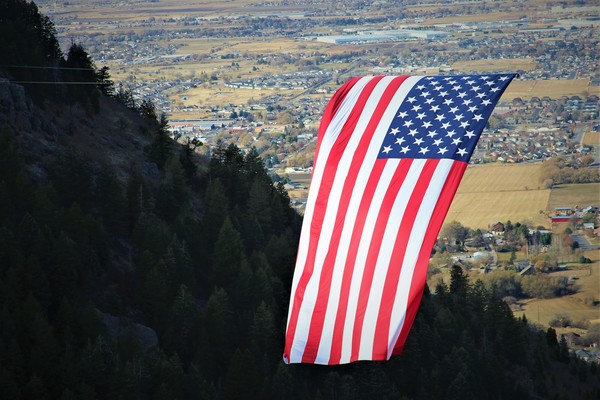 An update on reopening Forest Service offices The USDA Forest Service has remained fully operational throughout the COVID-19 pandemic, but some facilities are closed to protect employees and the public. We have gotten creative with how we provide important services to the public, like issuing permits and providing maps. Reach out to your local Forest Service office to find out more. The closures of our offices and some sites have helped discourage large groups from gathering in certain places. These decisions have ensured that recreational services could conform to social distancing criteria. These decisions were made with state and local partners working together. Dispersed recreational activities where contact is minimal continues to remain open. Please continue to social distance and adhere to outdoor ethical standards as we continue to move forward. The Forest Service continues to balance our work with local and state governments in ways that allow us to deliver our mission through a phased approach and work towards resuming regular facility operations. We continue to evaluate the phased-in approaches for field operations using a risk-based approach that complies with federal direction, guidance, and criteria established for moving toward normal activities. For frequently asked questions, visit https://www.fs.usda.gov/about-agency/covid19-updates. The Centers for Disease Control and Prevention published its "Visiting Parks and Recreational Facilities: Protect Yourself and Others from COVID-19." The key is to know before you go and to follow safety and health guidelines from reputable sources. 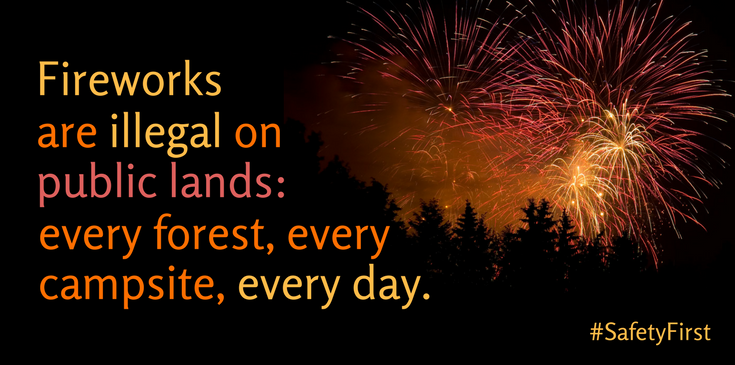 UKRAINE – Wildfires are an increasing worldwide problem, but inside the 2,600 km2 Chernobyl Exclusion Zone the effects of non-contained fires could be global. Over the past few weeks, while Ukraine's emergency response community grappled with response to COVID-19, major news outlets like the New York Times warned of a growing fire in the Chernobyl Exclusion Zone. Over the course of these growing fires, more than 1,000 firefighters were mobilized in one of the more contaminated areas of the zone. The USDA Forest Service provided technical assistance behind the scenes during these most recent fires, but these efforts were just the most recent cooperation in a long-term partnership. Read the entire story: https://www.fs.usda.gov/inside-fs/delivering-mission/apply/forest-service-provides-fifteen-years-support-wildfire-response 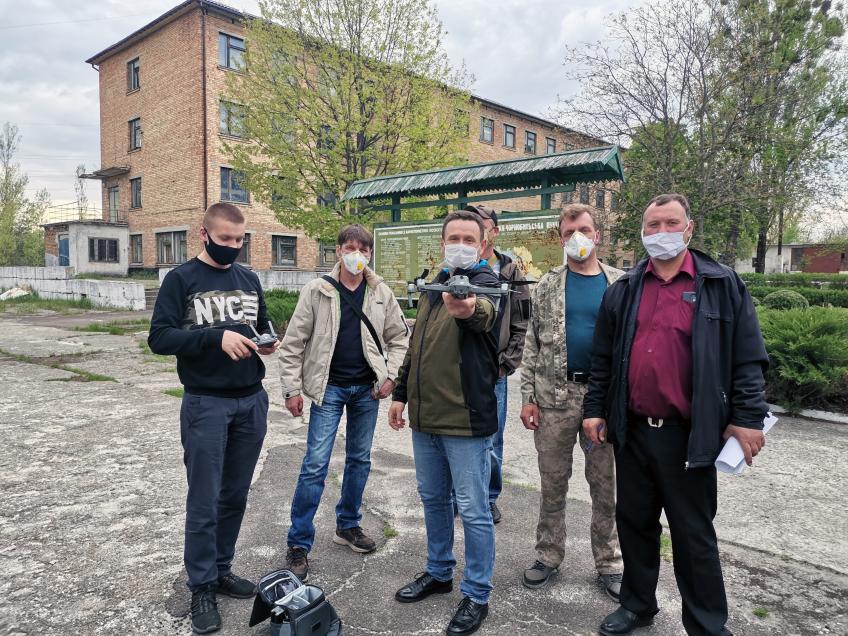 Purpose: Establish vision, priorities, and direction on: - Increasing the productivity of National Forests and Grasslands
- Valuing our Nation's grazing heritage and the National Grasslands
- Increasing access to our National Forests
- Expediting environmental reviews to support active management
As Secretary of Agriculture, it is my duty to ensure our National Forests and Grasslands are on a path to health and productivity so they can continue to meet the needs of citizens and communities, both now and into the future. It is the first priority of the Forest Service to serve the American people and work in ways that exemplify the values of Shared Stewardship. We need modern systems and approaches and less complicated regulations to serve our customers and improve our delivery of the goods and services that the American people want and need from the Nation's Forest System. The 193 million acres of public lands managed by the Forest Service provide important resources and recreational opportunities to the people of this great Nation. These lands are critical for the prosperity of rural communities, sustaining jobs and livelihoods in grazing, mining, oil and gas development, recreation and forestry — sectors that support our American way of life. These lands also furnish food and water that all life depends on. While I am proud of the progress to promote active management, reduce hazardous fuels, work across boundaries and increase the resiliency of our Nation's forests and grasslands, I believe more can be done. Today, I am announcing a blueprint for reforms to further provide relief from burdensome regulations, improve customer service, and boost the productivity of our National Forests and Grasslands. For more information visit: https://www.fs.usda.gov/news/releases/secretarial-memorandum-chief-forest-service 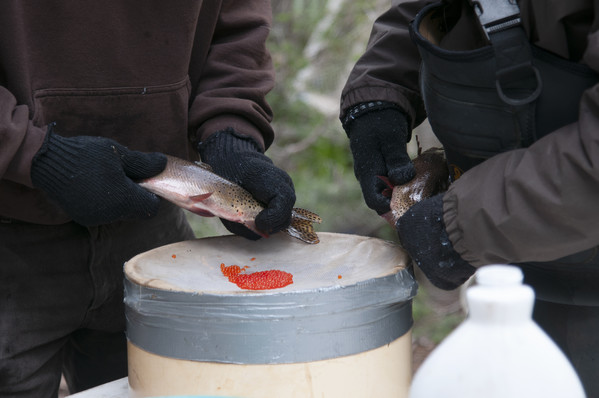 Wildlife biologists working to strengthen Colorado River Cutthroat trout populations in the Dixie National Forest Utah Division of Wildlife Resources biologists took to the Dixie National Forest looking to trap Colorado River Cutthroat trout in the Escalante Ranger District's Barker Recreation Area. "These fish are native to basins in the southern region that flow into the Colorado River, primarily the Boulder Mountains," said Chuck Chamberlain, Dixie and Fishlake National Forests Fish and Wildlife Program Manager. "The Dixie contains historic habitat for Colorado River Cutthroat and has been the primary source for these fish in Utah." These fish historically occupied portions of the Colorado River drainage in Utah, Wyoming and Colorado. Widespread introductions of non-native salmonids over the last century have served to limit current distributions primarily to isolated headwater streams and lakes. Unfortunately, pure Colorado River Cutthroat trout are now rare throughout their historic range because of habitat loss or alteration, predation by and competition with nonnative fishes, and hybridization with nonnative trout, such as the Rainbow trout. Because of the many threats to the Colorado River Cutthroat, the subspecies is included on the Utah sensitive species list. However, in the late 1980's and early 1990's, the Utah Division of Wildlife Resources in cooperation with the Dixie National Forest, began work to re-establish these fish into selected drainages of the Boulder Mountains. To help these re-introductions, fish were transplanted into Dougherty Basin in hopes that they could be used as a brood source for future reintroductions and to establish sport fisheries for these rare fish. Recently, a team of biologists stayed on site at Dougherty Basin capturing fish and holding them in live wells until they could extract the eggs from the females. The extracted eggs will end up in the state hatchery system where they have a much better survival rate of eggs to young fish until they are a few inches long. A priority for this project is to take enough eggs and fish to develop a brood source in the hatchery and use that source to populate more lakes and streams in the future for both conservation and sport fish purposes. The conservation of the Colorado River Cutthroat trout is a fisheries management success story that has fortuitously preserved this species for future generations. "Once imperiled, the Colorado River Cutthroat trout is now thriving in lakes and streams of the Boulder Mountains thanks to the efforts of the Utah DWR and Dixie National Forest," said Chamberlain. 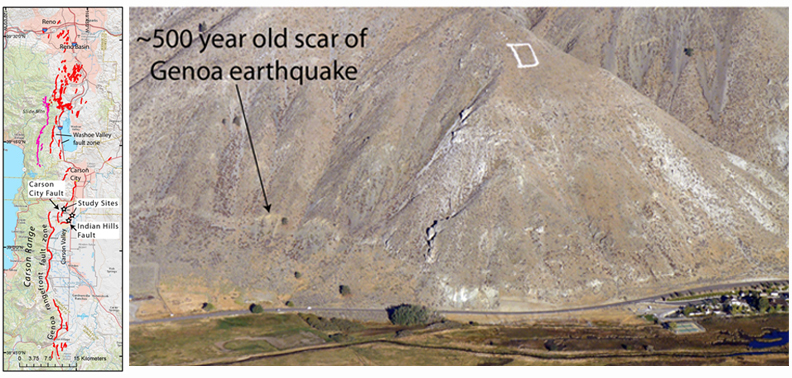 Figure 1 (on left) and 2 (above). Diagram and photo courtesy of Dr. Steven Wesnousky, University of Nevada Reno. Fault Trenching Reveals Paleoseismic Activity and Earthquake History of the Carson Range Fault System on the Carson Ranger District By David E. Risley, Geologist on the Humboldt-Toiyabe National Forest Much of the topography of the western United States is a result of tectonics. As tectonic plates move, the motion is released a little at a time as earthquakes. Across eastern California, Nevada, and Utah the crust is extending, and this extension is accommodated by normal faults. Each time there is an earthquake on a normal fault, vertical offset occurs where one side goes up, while the other goes down, producing a fault scarp. After many earthquakes, these stair-stepping scarps add up to the prominent rangefront patterns we see throughout the Basin and Range, such as the Eastern Sierra escarpment in eastern Nevada and western California. Ph.D. student Ian Pierce with his advisor Dr. Steven G. Wesnousky at the University of Nevada Reno have been conducting a geological study of prehistoric earthquakes and tectonic movement along the Eastern Sierra Escarpment in the vicinity of Carson City, NV. Within this area, the Genoa Fault marks the boundary between the Carson Range and the Carson Valley to the east (Figures 1 & 2).The research is being conducted with permits provided by the Humboldt-Toiyabe National Forest, the Washoe Tribe of Nevada and California, and funding provided by the National Earthquake Hazards Reduction Program of the United States Geological Survey. Splaying off the mapped trace of the Genoa Fault are two more earthquake faults that trend into the urbanized areas of Carson City: the Carson City and Indian Hills Faults. The investigators are attempting to learn when the last earthquakes occurred on these faults, whether or not they were part of the Genoa earthquake, and magnitude and recurrence rates of the earthquakes. During the Summer of 2019, Ian Pierce (PhD candidate, UNR), Dr. Steven G. Wesnousky, along with student assistants from the University of Nevada Reno, excavated three trenches across the Carson City and Indian Hills faults for the purpose of assessing the prehistoric earthquake (paleoearthquake) record (Figure 3). When large earthquakes occur they produce a scarp on the ground surface. Subsequently, with time and erosion, the scarp degrades to deposit materials at the top of the scarp to the base of the scarp, and grasses and soil develop on the eroded materials. With another earthquake, the process repeats itself and fresh surfaces are exposed. Structural, stratigraphic, and soil relationships along with radiocarbon (a radioactive isotope of carbon) preserved in the deposits exposed in the trenches are used to interpret the past size and timing of earthquakes (Figure 4). The Carson City and Indian Hills fault traces cross and run adjacent to important critical state, county, and city infrastructures, including among them the Carson Highway, regional gas pipelines, sewage lines, electric lines and major water storage facilities, all of which serve the immediate Carson City municipal area and outlying regions. The study will quantify the hazard imposed by the faults to these important infrastructures. The results of the study will further be incorporated into the National Seismic Hazard Maps of the USGS which are used in formulating engineering design codes for the region. The initial mapping and interpretation of the trench walls has been completed. The observations show that each of the scarps record one or more paleoearthquakes that produced ground displacements of ~1m or more. The timing of earthquake displacements awaits the final radiocarbon dating laboratory analysis of sediments and charcoal collected from the trenches; however, preliminary isotope dates suggest that the most recent ground-displacing earthquakes on the Carson City and Indian Hills faults occurred 400 to 600 years ago, consistent with dates obtained from earlier trenching on the Genoa Fault. The investigators anticipate providing a presentation of the results to the Forest Service upon completion of the study later this autumn.https://go.usa.gov/xvJUc. 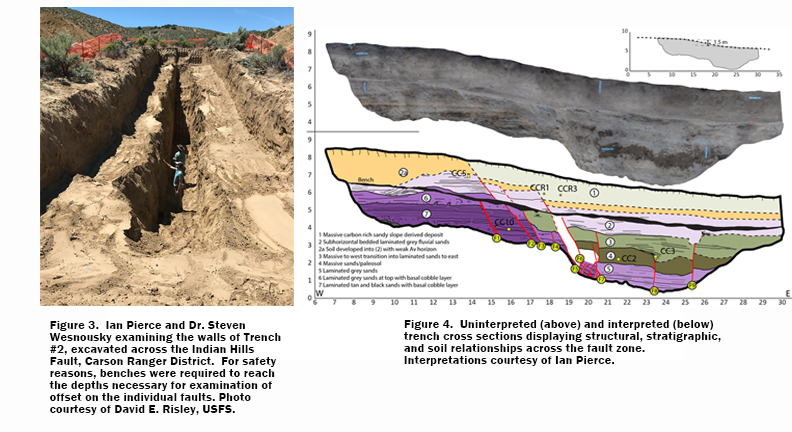 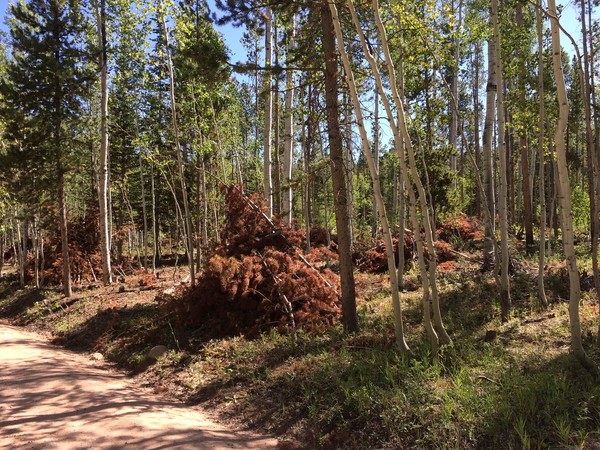 These piles are were constructed for burning in areas along the Mirror Lake Highway and Highway 35. Forest Service Photo by Maggie Dalene. East Zone Fuels Management Program Begins Upper Provo Phase 4 The East Zone Fuels Management program is currently implementing Upper Provo Phase 4, a hazardous fuels reduction project and part of the 91,000 acre Upper Provo watershed planning area. The goal of prior and planned project work is focused on improving the resiliency of critical watersheds in the Western Uintas by reducing fuels in strategic places across the watershed. This will limit the effects of a high severity fire, provide fire managers with options when responding to wildfire, facilitate the beneficial ecological effects of prescribed fire, and improve quality wildlife habitat. The work for Phase 4 is occurring in several areas along the Mirror Lake Highway and Highway 35. The project contract was awarded to MP Forestry, based in Medford Oregon and has been in progress since 2019. The contract has three different treatments. The first treatment is a lop and scatter where young juniper is being cut and dispersed to reduce tree canopy density and juniper encroachment. The second treatment involves hazard tree removal where some trees within the stand are being cut along travel corridors. The third treatment is a pre-commercial thinning where selected trees within very dense stands are being removed to promote healthier trees. Much of the biomass material in these treatments will be placed in piles to be burned at a later date. For more information, please go to the forest website at https://www.fs.usda.gov/uwcnf. Visit our kids page and explore videos, celebrate wildflowers, learn about trees and become a member of Team Smokey! There are many opportunities to learn not only for kids but for parents and educators as well. You can connect with several Forest Service programs or enter the Smokey Bear/ Woodsy Owl coloring contest. We have ideas for educators and also continuous learning opportunities for all. Dig deeper and enjoy these opportunities. Visit https://www.fs.usda.gov/learn/kids for more details. 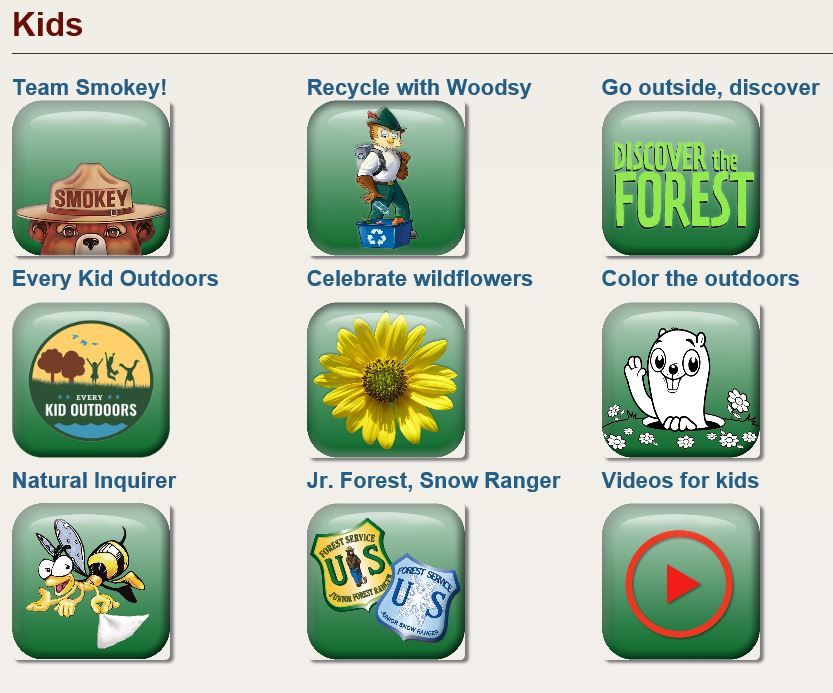 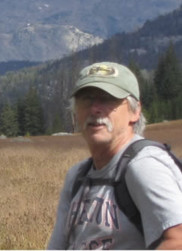 Hi, I'm Jamie Schoen, Forest Archeologist on the Bridger-Teton National Forest. My primary responsibility is to find and protect the historic and prehistoric resources on the Forest. Any project, or undertaking, that is proposed by the Forest Service needs to be reviewed to insure that the project will not alter, damage, or destroy those resources. Not only am I responsible for those resources on the ground, but I'm also responsible for maintaining historic documents and photographs and making information about the history and prehistory of the Forest available for the public. Where were you when this photo was taken? I was hiking into our project area in the Bridger Wilderness. How long have you been in your current position? I started working for the Forest Service in 1988 on the Bridger-Teton National Forest, and I have been here since. Why is your work important? Archeological resources are irreplaceable. Once they are damaged or destroyed, they are lost forever. The public has a keen interest in learning about the past, and in many cases helps us to find and protect those resources. We need to protect the resources so future generations have a connection to the past and learn more about who they are, who came before them, and how past activities helped shape who we are today. For the full story, visit https://go.usa.gov/xwUyt. |  Click image for PDF version of the USDA Forest Service Volunteer Guide The online guide for volunteerism and service opportunities with the USDA Forest Service is up, live, and available! Check it out here. How did you spend your winter on Public Lands? #ItsAllYours Links: Back to Top | 
No comments:
Post a Comment